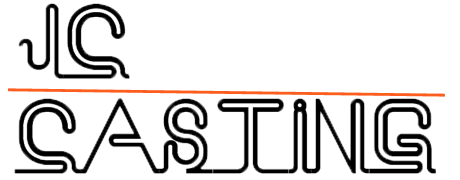Zinc Die Casting Manufacturer
JC Casting is a zinc die casting parts manufacturer in China. The weight range is from 10g to more than 100 kgs with superior quality.
The zinc die casting surface finishings can be also finished in our factory. Such as powder coating, e-coating, shot blasting, chrome plating, and bright finish.
The industries JC Casting serves include automotive, food dairy, machinery, watering, mining, petrochemical, medical, plumbing, electrical, energy, aerospace, submarine.
What Is Zinc Die Casting?
Zinc die casting is a metal casting process. It is pressuring molten metal into the mold cavity. The mold cavity is created using two hardened tool steel molds that are machined to the net shape or near-net shape of the zinc die casting parts.
The zinc die casting products are made with a high degree of accuracy and repeatability. The Zinc die casting process can also produce fine details. Such as textured surfaces or without requiring further processing.
How is Zinc Die Casting Made?
Steel dies are made by 2 parts to allow the castings to be removed. It can produce thousands of zinc castings in quick succession.
These parts are firmly installed in the machine and are fixed. The other one is movable (injector die half).
To begin the casting, the two mold halves are clamped together by a die-casting machine. Molten zinc alloy is injected into the mold cavity and rapidly solidified. The mold half is opened and the zinc casting is ejected. Zinc die casting molds can be simple or complicated. With movable slides, cores or other parts, depending on the complexity of the casting.
For now, zinc die casting production speed has been the fastest cycle to produce precision zinc parts. This is in stark contrast to sand casting. Sand casting requires new sand molds for each casting. Although the permanent mold process uses iron or steel molds instead of sand, it is much slower. And less precise than zinc die castings.
Advantages of Zinc Die Casting
- Long tool life
- Low energy cost
- High Precision tolerance
- Superior thermal conductivity
- Fast cycle time
- Excelent Corrosion resistance
- Superior decorative finishing
Zinc Die Casting Material Grade
ZAMAK 2
Tensile Strength: 359 Mpa, Thermal Conductivity: 105 W/mK,
Features
- Excellent damping capacity and vibration attenuation.
- Superior to other Zamak alloys with creep performance.
- High strength and hardness levels after long-term aging
ZAMAK 3
Tensile Strength: 283 Mpa, Thermal Conductivity: 113 W/mK,
Features
- Great balance of physical and mechanical properties.
- Excellent finishing characteristics for plating, painting, and chromate treatments.
- Good castability and long-term dimensional stability.
- Good damping capacity and vibration attenuation.
ZAMAK 5
Tensile Strength: 328 Mpa, Thermal Conductivity: 109 W/mK,
Features
- Has a higher copper content than Zamak 3, which results in higher strength.
- Has less ductility than Zamak 3.
- More readily plated, finished, and machined than Zamak 3.
ZA 8
Tensile Strength: 374Mpa, Thermal Conductivity: 115 W/mK,
Features
- Ideal for decorative application.
- Excellent finishing and plating characteristics.
- Good performance of strength, hardness, and creep properties.
Secondary Operations of Zinc Die Casting We Offer
- High precision CNC machining, milling, drilling, tapping, e-coating, anodizing
- Painting, sanding, shot blasting, powder coating, chrome plating
